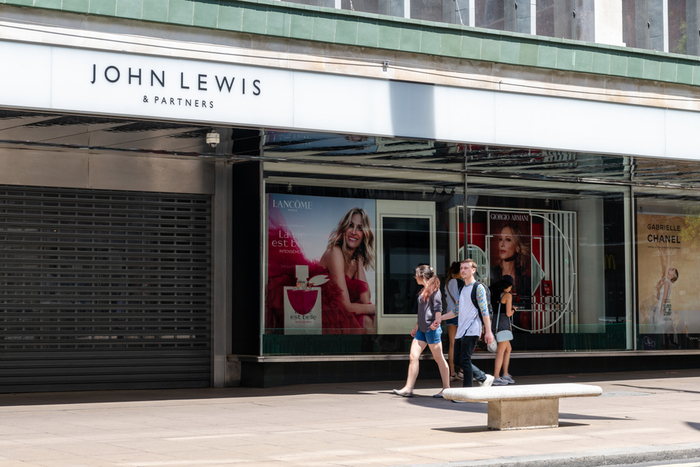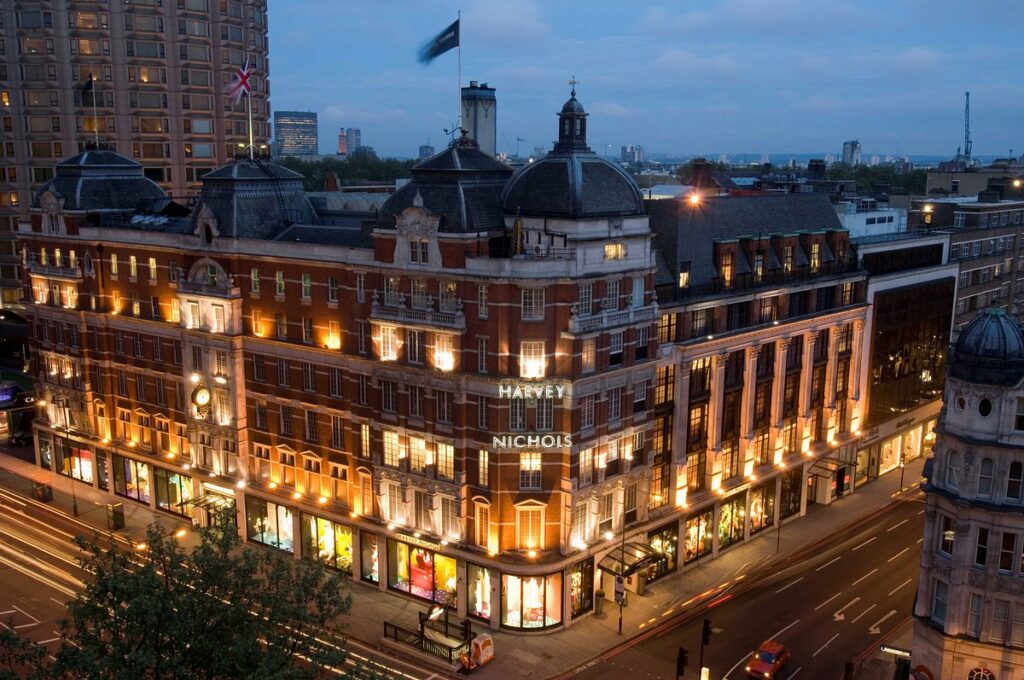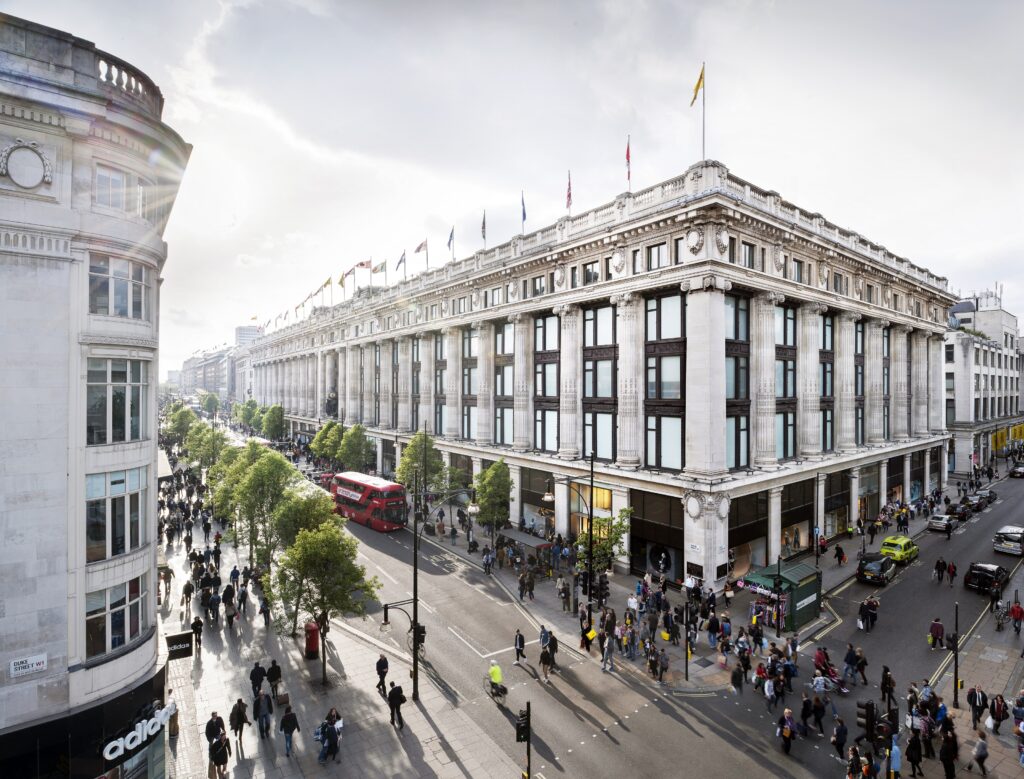Rising rents, falling profits, dwindling footfall and Covid-19 restrictions have combined have played a huge role in retailers making difficult decisions to stay afloat. While store closures may have been a common path to take to cut costs, repurposing store space is fast becoming a new trend.
Since the relaxation of planning rules for England came into effect in 2013, developers have embraced the concept of converting unused retail space into residential spaces – aimed at tackling the UK’s housing shortage. Lately though, retailers have expressed an interest in converting store space into offices as they seek ways to return to profitability.
Businesses were already attracted to the concept of conversion before the pandemic, with a 2019 report by real estate company Savills highlighting that 75 per cent of landlords were considering undertaking a repurposing project in the foreseeable future.
Although the pandemic may be primarily to blame for an acceleration in this trend, the decline in footfall was evident for years prior to the crisis as consumers adapted to online shopping.

Online retailers such as Asos and Boohoo recorded surging sales in recent years despite being around for over a decade.
In fact, The Times recently reported that although Boohoo was universally criticised after allegations of “sweatshop conditions” at some of its Leicester suppliers, its reputation has “emerged from the scandal unscathed”. Meanwhile Asos is triumphing amid the crisis after acquiring Topshop – with its shares rising 13 per cent in the two days it bought Sir Philip Green’s former flagship business.
Retailers for years have been simplifying their online shopping channels, whether it’s with click-and-collect, next-day delivery or an easy returns service. The Covid-19 pandemic has just accelerated the growing trend in this way of shopping.
It’s also looking likely that a return to pre-pandemic footfall levels may not be achievable in the immediate future, and working from home – which has proved preferable and successful for many since the first lockdown almost a year ago – is expected to become more prevalent once the pandemic subsides.
Yet established retailers such as John Lewis and Marks & Spencer have both revealed plans to downsize their stores and convert the unused spaces into offices. This begs the question: why are retailers opting for this strategy if working from home were to become prevalent in a post-Covid world?
Vacant retail space has significant socioeconomic consequences for communities. Urban areas with high vacancy rates may lead to lower footfall and therefore lower retail sales. This is arguably uninviting to new retailers and investors who are less likely to invest in new spaces such as offices, homes, leisure and retail facilities. This downward cycle can have further social repercussions if it then impacts employment and the local economic stimulation.
“Repurposing of retail units including residential and office uses is the way forward”
Oversupply – which is a growing amount of space that is no longer required by retailers and is increasingly becoming empty for long periods of time – remains a challenge. But it also presents opportunities for reimagining retail space that isn’t correctly in use.
In October, John Lewis was granted permission by Westminster City Council to convert 45 per cent of its London flagship store on Oxford Street into office space. Currently, kitchen and bathroom products, electrical appliances, children’s toys and books are concentrated there. In the future, the retail area would comprise only the basement, the ground floor, the first and second floors.
The council’s planning sub-committee voted unanimously “on the basis of exceptional circumstances to justify the loss of retail floorspace”.
John Lewis said it was working with partners to progress plans for housing delivery, with two planning applications expected to be made in early 2021. In addition, parent company John Lewis Partnership found 20 John Lewis and Waitrose sites for the building of “quality and sustainable housing”.
John Lewis said that the developments would be for build-to-rent schemes, which would be furnished with stock from John Lewis stores, and to which it would offer to deliver Waitrose food. Just this week the retailer said this week that it was expecting 40 per cent of its profits to come from non-retail activities such as housing over the next decade.
More recently, M&S revealed redevelopment plans for its Marble Arch flagship in central London that will see it downsize retail space and create offices on upper floors. It’s thought that the redevelopment could comprise of three lower floors trading as M&S, offering a range of food, fashion and home goods and with in-store technology to promote products from its ecommerce site.
The world of retail and commercial property is at an inflection point. As retailers reduce their footprint, landlords are left with empty units with irrecoverable rent and service charges. This can be seen with the collapse of retail empires Debenhams and Sir Philip Green’s Arcadia Group, in which huge glut of empty retail space – the equivalent to roughly 200 full-size pitches – will hit the property market.
Prior to Debenhams’ winding-up court order in January, the department store chain received planning permission last October to partially convert the fourth and fifth floors of its flagship store in London into offices. Now a former Debenhams store that forms part of the Hammerson-owned Highcross shopping centre in Leicester is set to be converted into 300 rental flats – pending planning permission from the local council.
Meanwhile, shopping centre giant Unibail-Rodamco-Westfield was granted permission by Hammersmith & Fulham Borough in July toconvert two-thirds of Westfield London’s House of Fraser store into a WeWork-style office space. The proposals will redevelop the 104,000sq ft House of Fraser site into 68,000sq ft of flexible office space and 32,000sq ft of retail space across two units.
However, in an age where people are working from home, the new office spaces may pose as a risk. Though the UK has been given dates for reopening non-essential shops and services, there remains a possibility of workers continuing to remain at home even after the current lockdown comes to an end and some pre-Covid normality returns.
For England – home to 84 per cent of the UK’s population and the majority of retail destinations – the end of lockdown for non-essential retail has been set for no earlier than April 12.
In Wales, non-essential retail can gradually reopen from March 22, although most will remain shut and will reopen on April 12 – the same as England.
Meanwhile in Scotland, some non-essential shops such as garden centres and homeware stores, plus non-essential click-and-collect services, can start to reopen open from April 5. But most non-essential retailers will remain closed until April 26.
As for Northern Ireland, from April 1 click-and-collect purchases will be allowed from garden centres and plant nurseries before being extended to all non-essential click-and-collect from April 12. Unlike the other UK nations, Northern Ireland said its lockdown exit would be driven by data, and as a result has not yet provided indicative dates of when non-essential shops can reopen.
Nonetheless, Prime Minister Boris Johnson previously expressed hopes that all Covid-19 restrictions across most facets of life could be lifted by late June.
“Retail has been knocked for a six with oversupply of space and little demand with thousands of shop units closing,” argued Andrew Seale, senior surveyor at property consultancy Barnsdales.
“Repurposing of retail units including residential, office and leisure uses is the way forward as the internet sales growth moves inexorably upwards.”
Martin Carr, strategic retail advisor at professional services network EY, said landlords and shopping centre owners have been looking at alternative uses for retail space for some time, but the pandemic and its impact on consumer behaviour has increased the urgency of this issue.
“Only recently have retailers themselves started looking at reconfiguring their own space for alternative use,” he told Retail Gazette.
“Thus far, we’re only hearing of London stores being considered for office conversion, reflecting expectations that central London office space will remain in demand.
“A hybrid working model appears to be the up and coming trend”
“This will be something to keep an eye on as post-pandemic behaviour becomes clearer.
“In the case of department stores, the physical changes to buildings required to make them suitable for offices could be challenging.
“There is a large expanse of floor space in these premises, so providing natural light to areas at the centre of buildings may prove difficult and expensive.
“Retail landlords will also have to solve challenges when reutilising space in shopping developments that may be losing major anchor tenants.
“Flexible office space and innovation hubs are being considered but as with department stores, the cost and scale of redevelopment, as well as the impact on value, will be a key question.
“Alternatives to office redevelopment include leisure and entertainment facilities, such as trampoline parks and escape rooms, to try to drive footfall and increase dwell times.
“These options are increasingly under consideration and are starting to appear in some retail developments that can provide the floorspace that these users require.”
Peter Ballard, co-founder of experience design agency Foolproof, said a hybrid working model appears to be the rising trend for when people can safely return to the offices.
“Even if 50 per cent of your office space is not being occupied by employees, businesses will still need the space because of how and when staff choose to visit,” he said.
“Businesses may find everyone in on a Tuesday but then only a third of staff in on a Wednesday for example. Retailers are now understanding that perhaps the office space they currently have was way over capacity pre-Covid.
“Office space still is a necessity for a lot of business activities such as collaboration, team building, innovation and brainstorming.
“Digital clearly has its benefits but there are definitely disadvantages to not having a shared ‘place’ where people can be physically present.
“The question for the retailers is – could converting parts of your existing space into offices be used to help access your customers or generate innovation?
“There is a huge opportunity for big brands like John Lewis and Marks & Spencer’s to be at the head of technological innovation.
“Retailers should be looking at office space and considering innovative ways of using it such as innovation or technology hubs or co-shared destinations for consumers which spark new ideas and product and service improvements.”
Meanwhile, Payal Hindocha, retail analyst at marketing service Emarsys, told Retail Gazette that it was not just office space that retailers and landlords were converting stores into. Some retailers have eyed their store spaces as an opportunity to launch a mixed use redevelopment.
Last July, House of Fraser said its Richmond store was due to be converted into a multi-million-pound retail and leisure destination after investors Canadian and Arcadia submitted planning proposals to Richmond Borough Council. The proposals amount to a sizeable new project, described in the brief as a “mixed-use redevelopment and multi-million pound investment in the property at 75-81 George Street”.
More recently, Asda’s new billionaire owners the Issa brothers announced they were working up plans to shrink retailing space dedicated to groceries by about a quarter, to make way for cafés, takeaways, and nail and beauty bars to create new customer experience incentives.
Mohsin and Zuber Issa, who recently bought the Big 4 grocer from US giant Walmart in £6.8 billion joint acquisition with private equity partners at TDR Capital, had been brainstorming ways on how they can utilise Asda’s shop floor space for anything other than groceries.
Across the UK, the sprawl of retail space has arguably become too much for the sector to manage. One of the main challenges facing the industry now is deciding how to reduce the amount of empty retail space.
Repurposing is already happening to some extent – although it is important to note this is presently taking place on a small scale.
For investors, while there is no failsafe blueprint for success, the appropriate repurposing of assets will lead to increased investment value. A decrease in quantum of retail, and enhancement of the remaining supply, should increase investor demand.
The retailers’ new developments also need to reflect new trends and behaviours, such as the need to work flexibly or have a net positive environmental impact.
With a heavy oversupply of retail space across the UK, as well as a huge increase in online spending, retailers no doubt have a tough job of injecting life into underutilised retail space – even after Covid-19.
Click here to sign up to Retail Gazette‘s free daily email newsletter

















